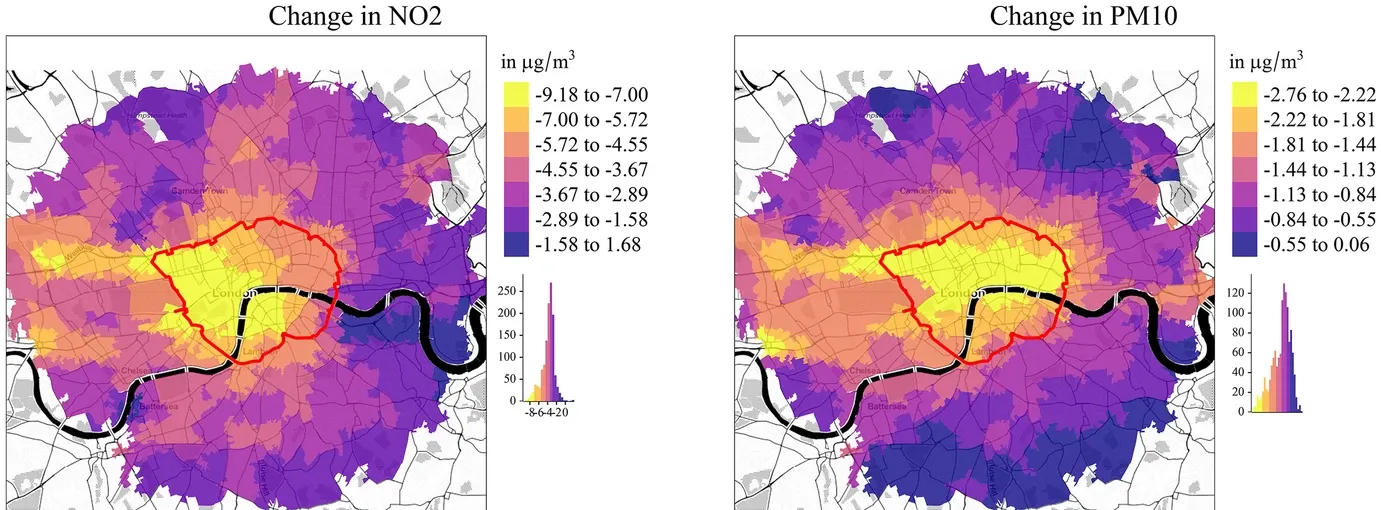In their recent paper published in Population and Environment, Risto Conte Keivabu and Nuffield College and LCDS affiliated postdoctoral researcher Tobias Rüttenauer investigate the effect of stricter Congestion Charge rules on air pollution and school absences in London. While the tighter traffic regulations reduced air pollution for all schools within the Congestion Charge Zone, mainly poor schools profited in terms of reduced school absences.
From late 2015 onwards, London implemented stricter regulations on which cars can enter the Congestion Charge Zone (CCZ), and specifically targeted a reduction in hazardous pollution within the zone.
The study combines air pollution data between 2012 and 2019 with official school records from the British Department of Education within London.
It investigates 1) whether the stricter regulations reduced air pollution at schools within the CCZ, and 2) whether these improvements led to a reduction in school absences among affected schools. The authors use a Diff-in-Diff like approach to facilitate a before-and-after comparison.
The results reveal that the stricter regulations significantly reduced particulate matter, nitrogen dioxide, and benzene at locations of schools within the Congestion Charge Zone.
For instance, PM2.5 decreased by 4.6 percentage-points more inside the CCZ as compared to schools within 3km distance, and by 7.1 percentage-points more relative to schools within 10km distance to the CCZ. Additional analyses also reveal that the tighter regulations did not lead to a crowding-out effect: even schools within 1-3km distance to the CCZ experienced a reduction in air pollution due to the policy (albeit smaller).
The study moreover reveals heterogeneous effects on school absences. Pooling across all schools does not reveal a significant and meaningful effect of the stricter traffic regulation on school absences. However, those schools with a high share of pupils from a low socio-economic background experienced significant reductions in school absences: the tightening of congestion charge rules lowered absences among low SES schools by 1.1 percentage-points. This effect gradually unfolded from 2016 onwards and peaked in 2018, when the T-Charge was introduced.
The tighter traffic regulations of the London Congestion Charge thus mainly profited the poor, although they were effectively improving air quality for all.
Children from a lower socio-economic background, on average, have a higher prevalence of cardio-respiratory conditions such as asthma. They are thus presumably more sensitive to air pollution, and might profit more from the tighter traffic regulations in inner London.
To read the full article, click here.
Citation: Risto Conte Keivabu & Tobias Rüttenauer (2022). London congestion charge: the impact on air pollution and school attendance by socioeconomic status, Population and Environment, https://link.springer.com/article/10.1007/s11111-022-00401-4


